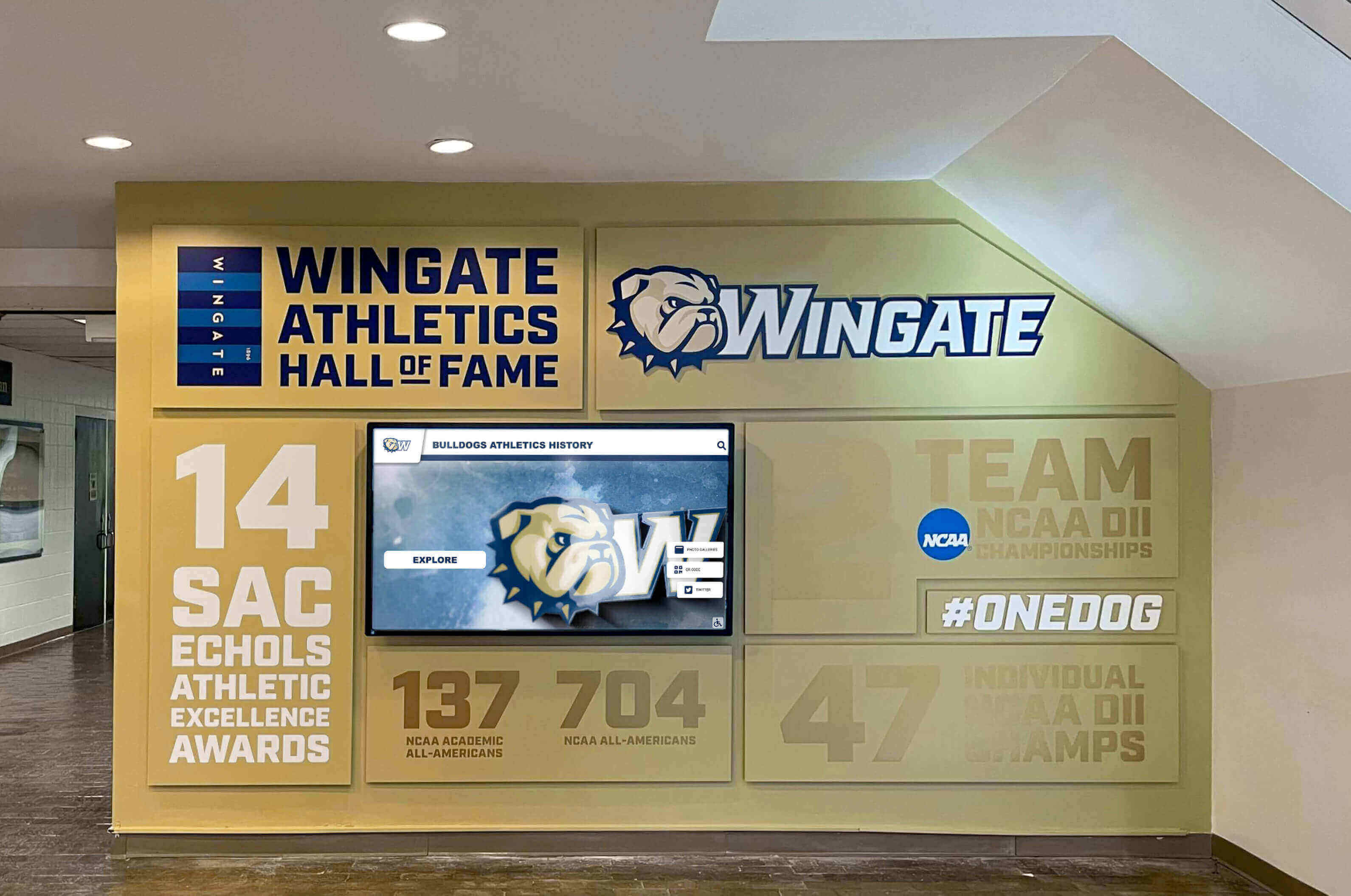Key Takeaways
Complete guide to creating honor retired coaches displays that celebrate coaching legends. Learn how digital recognition displays preserve legacies, inspire current teams, and build lasting tributes for retired coaches who shaped athletic programs.
Why Honoring Retired Coaches Matters for Athletic Programs
Recognition of coaching legends delivers profound benefits extending throughout athletic departments, current teams, alumni communities, and the broader institution.
Preserving Institutional History and Athletic Heritage
Every successful athletic program stands on foundations built by coaching pioneers who established competitive standards, developed program cultures, and created traditions that persist across decades. As these coaching legends retire, their knowledge, experiences, and stories risk disappearing from institutional memory.
Comprehensive retired coach recognition preserves this irreplaceable heritage systematically. Through detailed biographical profiles, recorded interviews, historical photographs, championship documentation, and career statistics, athletic programs maintain complete records of coaching contributions that shaped institutional identities. This preservation becomes increasingly valuable as years pass and fewer people remain who personally experienced these coaches’ direct impact.
Programs without systematic recognition often discover decades later that critical historical information—exact win-loss records, championship details, notable athlete accomplishments—has been lost because no one documented coaching careers comprehensively while coaches remained available to verify information and share memories. Modern digital recognition systems provide permanent archives protecting coaching legacies for future generations.
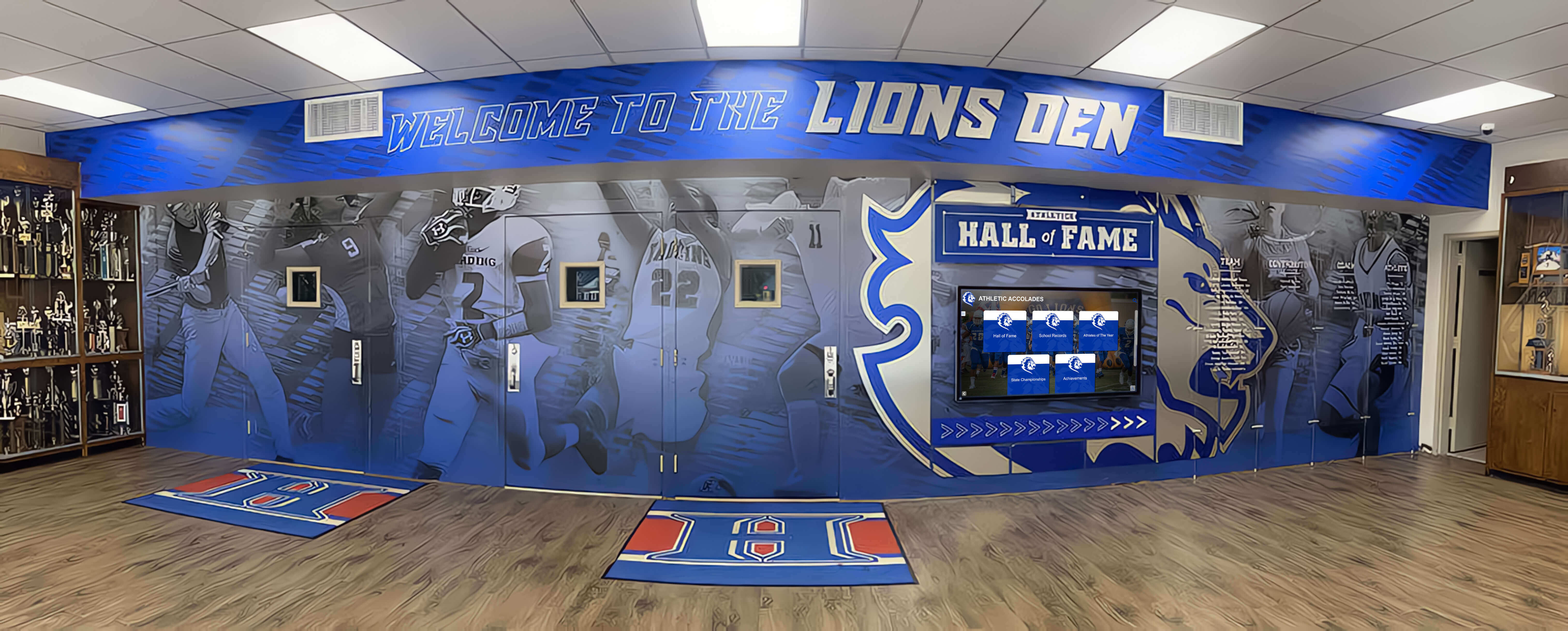
Demonstrating Institutional Gratitude and Values
How organizations treat coaching legends after retirement reveals fundamental institutional character. Programs that celebrate retired coaches prominently communicate powerful messages about organizational values—that dedication matters, contributions are remembered, excellence receives lasting recognition, and relationships transcend employment periods.
This visible gratitude strengthens relationships with active coaches who observe how their predecessors receive treatment, influencing retention decisions and program commitment. Young coaches evaluating career options note whether institutions honor coaching legends or forget them once they stop producing wins. Recognition culture becomes recruitment advantage for programs competing to attract top coaching talent.
Community members, alumni, donors, and families also notice institutional gratitude expression. Schools and organizations that honor coaching legends appropriately strengthen community connections, enhance fundraising prospects, and build reputations as places that value people beyond immediate utility.
Inspiring Current Athletes and Coaching Staff
When student-athletes see comprehensive tributes honoring coaching legends who built program foundations, it creates powerful connections to athletic tradition while inspiring excellence. Current team members understand they’re part of something larger than single seasons—continuing legacies established by coaches who dedicated careers to program development.
Coaches frequently incorporate retired coach recognition into team culture building. Pre-season facility tours introduce incoming athletes to program history through coaching tributes. Team meetings reference legendary coaches when discussing competitive standards or program values. Athletes develop appreciation for traditions they’re maintaining and extending.
This inspirational dimension proves particularly valuable during challenging seasons when teams struggle. Connecting with stories of coaching perseverance through adversity, championship breakthroughs after years of building, or legendary coaches who overcame setbacks provides perspective and motivation that sustains programs through difficult periods.
Understanding Different Approaches to Retired Coach Recognition
Athletic programs implement retired coach recognition through various formats, each offering distinct advantages and limitations based on institutional needs, budgets, and objectives.
Traditional Physical Recognition Methods
Conventional retired coach recognition typically employs physical displays—engraved plaques, framed photographs, painted names on gymnasium walls, or dedicated hallway sections showcasing coaching achievements.
Advantages of Traditional Displays:
- Tangible, permanent physical presence creating visible institutional commitment
- Familiar recognition format understood across generations
- No technology infrastructure or training requirements
- Lower entry costs for basic implementations
- Aesthetic appeal for those preferring classic recognition approaches
Limitations of Physical Recognition:
- Space constraints limiting comprehensive recognition capacity
- Minimal information conveyed beyond names, years, and basic achievements
- Difficult and expensive to update when errors discovered or information changes
- Static presentation unable to showcase multimedia content
- Geographic accessibility restricted to those visiting physical locations
- Maintenance challenges as materials age, fade, or deteriorate
Many programs begin with traditional approaches but eventually confront capacity limitations as more coaching legends retire and recognition space fills completely, forcing difficult decisions about which coaches receive visibility.
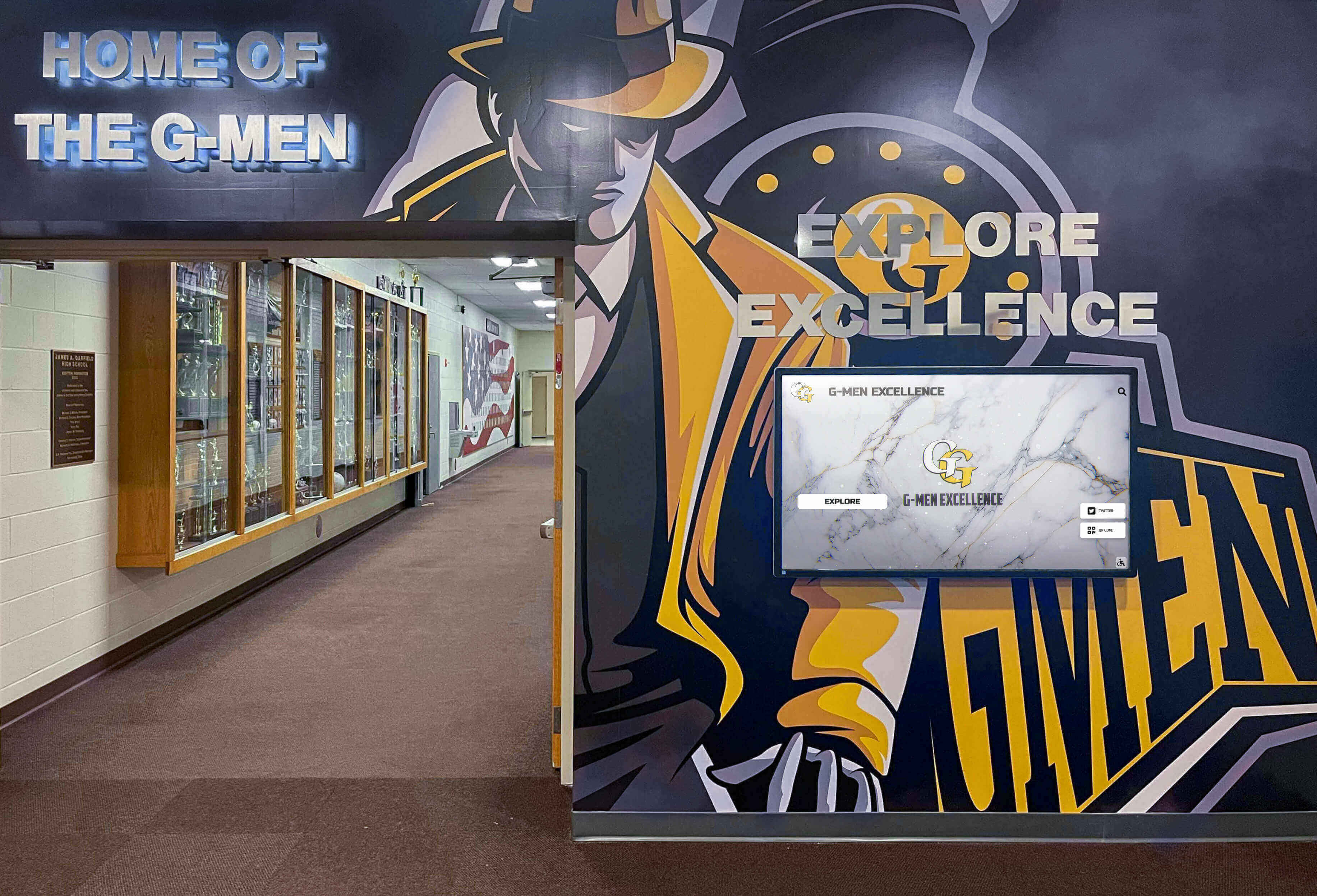
Modern Digital Recognition Displays
Interactive touchscreen displays and web-based recognition platforms transform retired coach tributes through unlimited capacity, rich multimedia content, and comprehensive storytelling capabilities that physical displays cannot match.
Comprehensive Coach Profiles: Digital platforms enable complete coaching biographies documenting educational backgrounds, playing careers, coaching philosophy statements, career statistics and records, championship achievements, notable athletes developed, awards and honors received, community contributions, personal reflections on coaching, video interviews and tribute messages, photo galleries spanning coaching careers, and professional development accomplishments.
Interactive Exploration Features: Visitors engage actively with digital recognition through searchable databases allowing name searches, browsing options by sport or era, filtering by achievements or championships, timeline visualizations showing career progressions, comparison features showing records and statistics, and connection to related content about teams and athletes coached.
Unlimited Recognition Capacity: Unlike physical displays with finite space, digital systems accommodate hundreds of coaching profiles without physical expansion. Programs can honor every coaching legend comprehensively rather than selecting only those fitting limited wall space.
Remote Accessibility: Web-based platforms extend recognition beyond physical locations, enabling alumni coaching legends to access their recognition from anywhere, families across the country to view coaching tributes, researchers to explore program history remotely, and media to feature coaching stories in articles and broadcasts.
Effortless Updates and Maintenance: Cloud-based content management allows instant corrections when errors discovered, easy additions as new information emerges, scheduled content updates for anniversaries or milestones, and no physical fabrication or installation expenses for changes.
Solutions like digital recognition displays for athletic programs provide comprehensive platforms specifically designed for honoring coaching excellence across all sports and eras.
Hybrid Recognition Strategies
Many programs implement hybrid approaches combining selective traditional recognition with comprehensive digital systems, offering benefits of both methods while addressing their respective limitations.
Strategic Traditional Recognition: Maintain limited traditional displays honoring the most legendary coaches or championship teams while avoiding capacity constraints through selectivity, create rotating physical displays changing periodically with different coaching eras or sports, preserve existing traditional recognition that already exists without expansion, and use physical plaques or nameplates as entry points with QR codes linking to expanded digital profiles.
Comprehensive Digital Coverage: Implement digital displays showcasing complete coaching histories across all sports, provide web accessibility enabling remote viewing for geographically dispersed alumni, support multimedia content enriching coaching stories beyond physical display capabilities, and allow unlimited capacity ensuring all retired coaches receive appropriate recognition regardless of available wall space.
This balanced strategy respects institutional traditions while solving practical limitations through modern technology that enables comprehensive recognition previously impossible with physical constraints.
Essential Content for Retired Coach Recognition Profiles
Meaningful recognition extends far beyond names and service years. Comprehensive coaching profiles celebrate complete careers through rich, detailed content honoring coaching contributions appropriately.
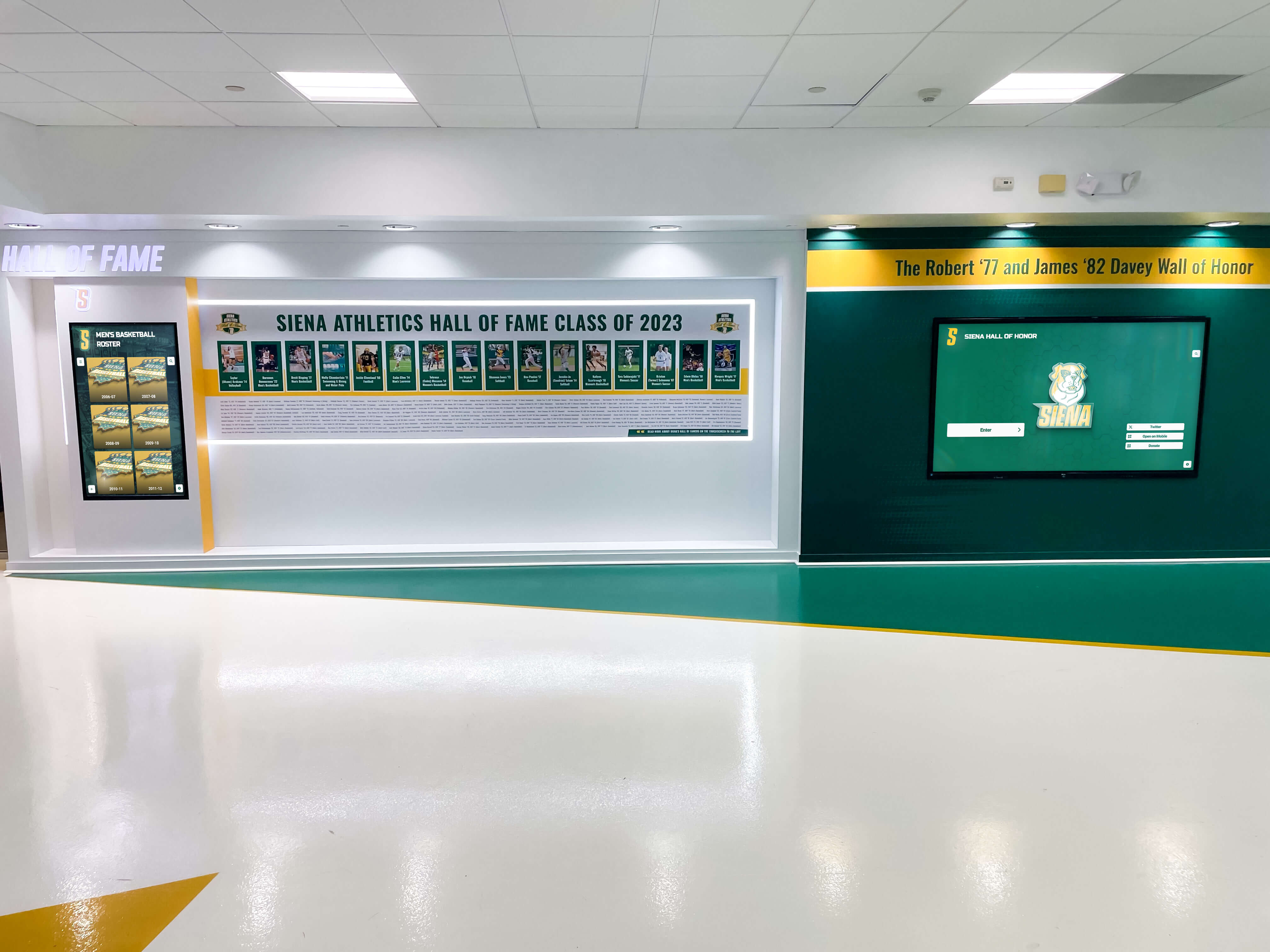
Biographical and Background Information
Educational History: Document undergraduate institutions and degrees, graduate education and advanced degrees, coaching certifications and professional development, and playing career details if applicable including positions, honors, and achievements as athlete.
Coaching Journey: Chronicle early coaching positions and career progression, assistant coaching roles and learning experiences, head coaching opportunities and program building, multiple sport coaching when applicable, and transition moments explaining career decisions and moves.
Coaching Philosophy: Include personal coaching philosophy statements describing approach to athlete development, core values emphasized with teams, beliefs about competition and sportsmanship, perspective on balancing academics and athletics, and lessons learned across coaching careers.
Career Achievements and Statistical Records
Overall Career Statistics: Present complete win-loss records across all seasons, winning percentage and competitive success metrics, years at institution and total coaching tenure, and comparison to program historical standards.
Championship Success: Document conference championships won with years, state or regional championships achieved, national tournament appearances and results, playoff records and postseason achievements, and undefeated seasons or notable winning streaks.
Individual Recognition: Highlight coach of the year awards at conference, state, or national levels, hall of fame inductions, professional organization honors, community recognition awards, and special tributes or dedications received.
Program Development Achievements: Showcase facility improvements or construction during tenure, program establishment or elevation to higher competitive levels, record-setting team or individual performances, scholarship opportunities created for athletes, and competitive standards established that persist after retirement.
Notable Athletes Developed: Feature athletes who achieved all-state or all-conference honors, players who competed collegiately or professionally, academic all-conference or all-state selections, scholarship recipients and college placements, and athletes achieving success in careers outside athletics.
Systems designed for recognizing coaching achievements and athletic excellence provide structured templates ensuring comprehensive documentation of coaching contributions.
Personal Stories and Testimonial Content
Memorable Moments: Capture defining victories or championship breakthroughs, overcoming adversity or rebuilding struggling programs, special relationships with particular athletes or teams, funny or heartwarming team memories, and turning point moments shaping coaching approaches.
Former Athlete Testimonials: Collect video or written tributes from athletes coached, reflections on coach’s impact on athletic development, stories about life lessons learned beyond sports, descriptions of coach’s mentorship and guidance, and acknowledgment of ongoing relationships years after graduation.
Colleague Perspectives: Include fellow coaches discussing professional excellence, athletic director views on program impact, opposing coaches expressing respect and admiration, and community members describing broader contributions beyond athletics.
Family Reflections: Feature spouse or family perspectives on coaching dedication, personal sacrifices supporting coaching careers, pride in coaching accomplishments and legacy, and family traditions built around coaching life.
Coach’s Own Voice: Preserve first-person reflections on career highlights and challenges, lessons learned across decades of coaching, gratitude expressed to athletes, families, and communities, advice for current and future coaches, and perspective on coaching career significance and meaning.
Multimedia Content Enrichment
Photography Collection: Assemble professional coaching portraits from career stages, action photos showing coach during games and practices, team photographs from championship seasons, facility and historical program photos, candid moments with athletes and assistant coaches, retirement celebrations and special recognition events, and recent photographs connecting past and present.
Video Content: Create interview footage where coaches reflect on careers, game footage showing coaching during competitions, championship celebration videos, tribute compilations from former athletes, retirement ceremony recordings, and documentary-style career retrospectives for legendary coaches.
Historical Documentation: Scan and display original game programs and media guides, newspaper clippings covering achievements, awards certificates and commendations, championship trophies and memorabilia photos, handwritten notes or playbooks, and letters from athletes or community members.
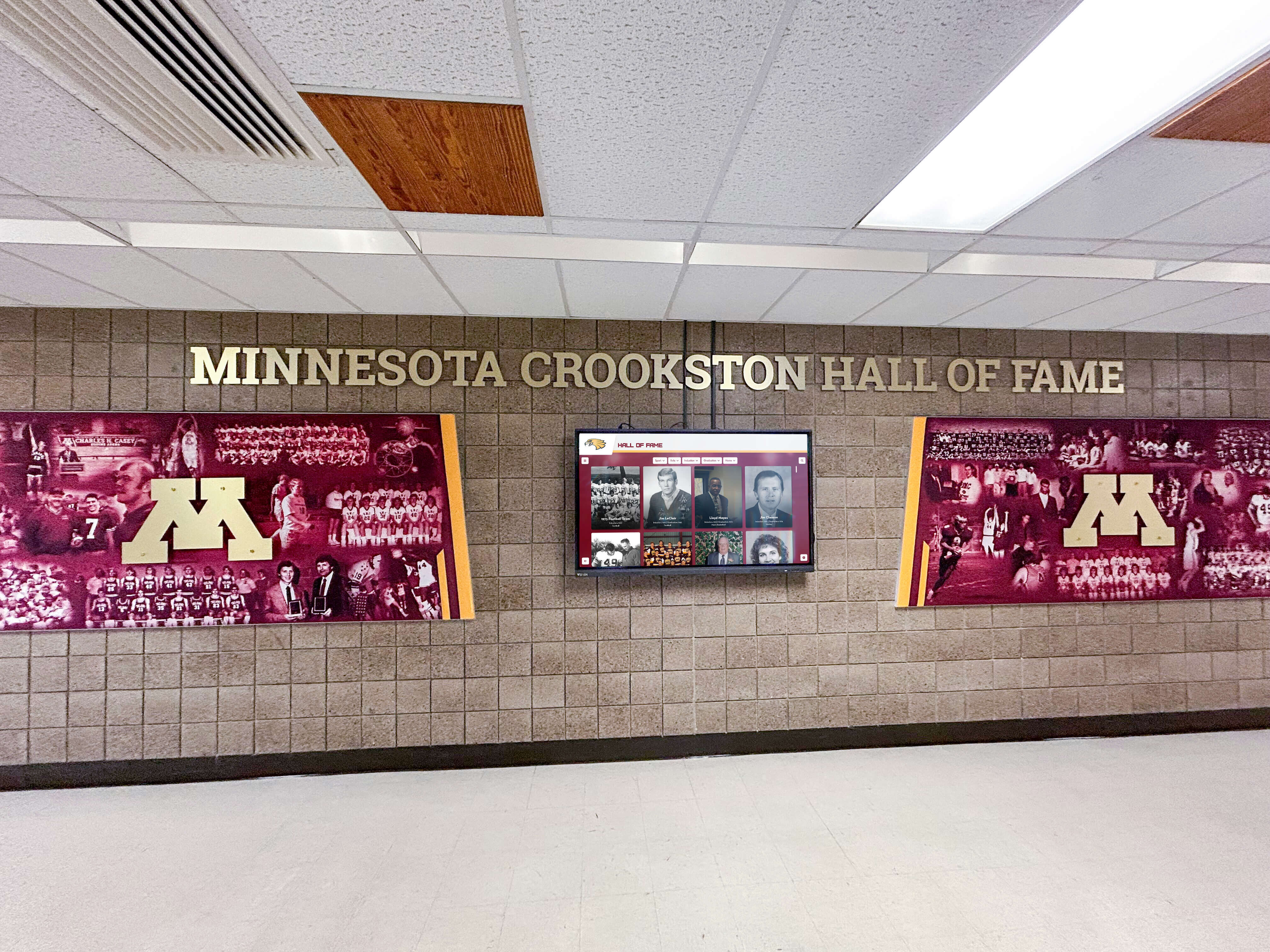
Planning and Implementing Retired Coach Recognition Programs
Successful recognition requires systematic planning addressing content development, technology selection, community engagement, and long-term sustainability.
Establishing Recognition Criteria and Inclusion Standards
Programs must define clear criteria determining which retired coaches receive recognition and what accomplishments warrant inclusion.
Minimum Service Requirements: Consider whether to set minimum years coached (5 years, 10 years, 20 years), include assistant coaches alongside head coaches, recognize multi-sport coaches appropriately, and acknowledge short-tenured coaches with exceptional achievements.
Achievement Thresholds: Determine if recognition requires specific winning percentages or records, championship qualifications (conference, state, national), coach of the year awards or special honors, athlete development accomplishments (college placements, professional athletes), or program building contributions regardless of championships.
Inclusive vs. Selective Approaches: Decide whether programs will recognize all retired coaches meeting minimum service requirements (inclusive approach honoring dedication), or limit recognition to coaching legends achieving exceptional accomplishments (selective approach emphasizing excellence).
Transparent Documentation: Formally document recognition criteria in writing, communicate standards clearly to coaching staffs and communities, apply criteria consistently across all sports and eras, and review criteria periodically ensuring fairness and relevance.
Clear, consistent criteria prevent perceptions of favoritism while ensuring worthy coaching legends receive appropriate recognition regardless of sport visibility or political considerations.
Forming Recognition Program Committees
Effective implementation benefits from diverse input representing multiple perspectives within athletic departments and communities.
Committee Composition: Include athletic director providing leadership and institutional authority, retired coaches offering coaching perspective and historical knowledge, current coaching staff ensuring program relevance, booster club or alumni association representatives, school administrators or institutional leaders, and former athletes who can represent athlete perspectives on coaching impact.
Committee Responsibilities: Research and identify coaching legends eligible for recognition, gather biographical information and career details, collect photographs, videos, and historical materials, coordinate testimonial collection from athletes and colleagues, develop content following established templates, review all content for accuracy before publication, plan recognition ceremonies and unveiling events, and maintain ongoing program management and updates.
Meeting Schedules: Hold regular committee meetings during planning and implementation phases, establish communication channels for ongoing coordination, document decisions and maintain records of deliberations, and create succession plans ensuring program continuity through committee member transitions.
Content Research and Development Process
Comprehensive coaching profiles require systematic information gathering from multiple sources ensuring accuracy and completeness.
Primary Source Research: Interview retired coaches directly collecting firsthand accounts, request personal photographs and memorabilia, gather career statistics from coaches’ own records, and collect coaching philosophy statements and reflections.
Institutional Records Review: Access athletic department archives for historical information, review yearbooks and media guides from coaching tenures, examine newspaper archives for game coverage and achievements, and verify statistics with conference or state athletic association records.
Testimonial Collection: Contact former athletes requesting written or video tributes, reach out to coaching colleagues for professional perspectives, solicit community member testimonials about broader impact, and engage family members for personal stories and photographs.
Historical Photograph Gathering: Scan personal photograph collections from coaches and families, digitize institutional archives from coaching eras, contact local newspapers for historical action photographs, and reach out to former athletes for team photos and candid moments.
Accuracy Verification: Cross-reference statistics and achievements across multiple sources, have coaches review biographical content for accuracy, verify spelling of all names and proper titles, and confirm dates and details of championships and awards.
Programs implementing comprehensive sports history documentation report that thorough research requires 3-6 months for complete content development depending on number of coaches and historical information availability.
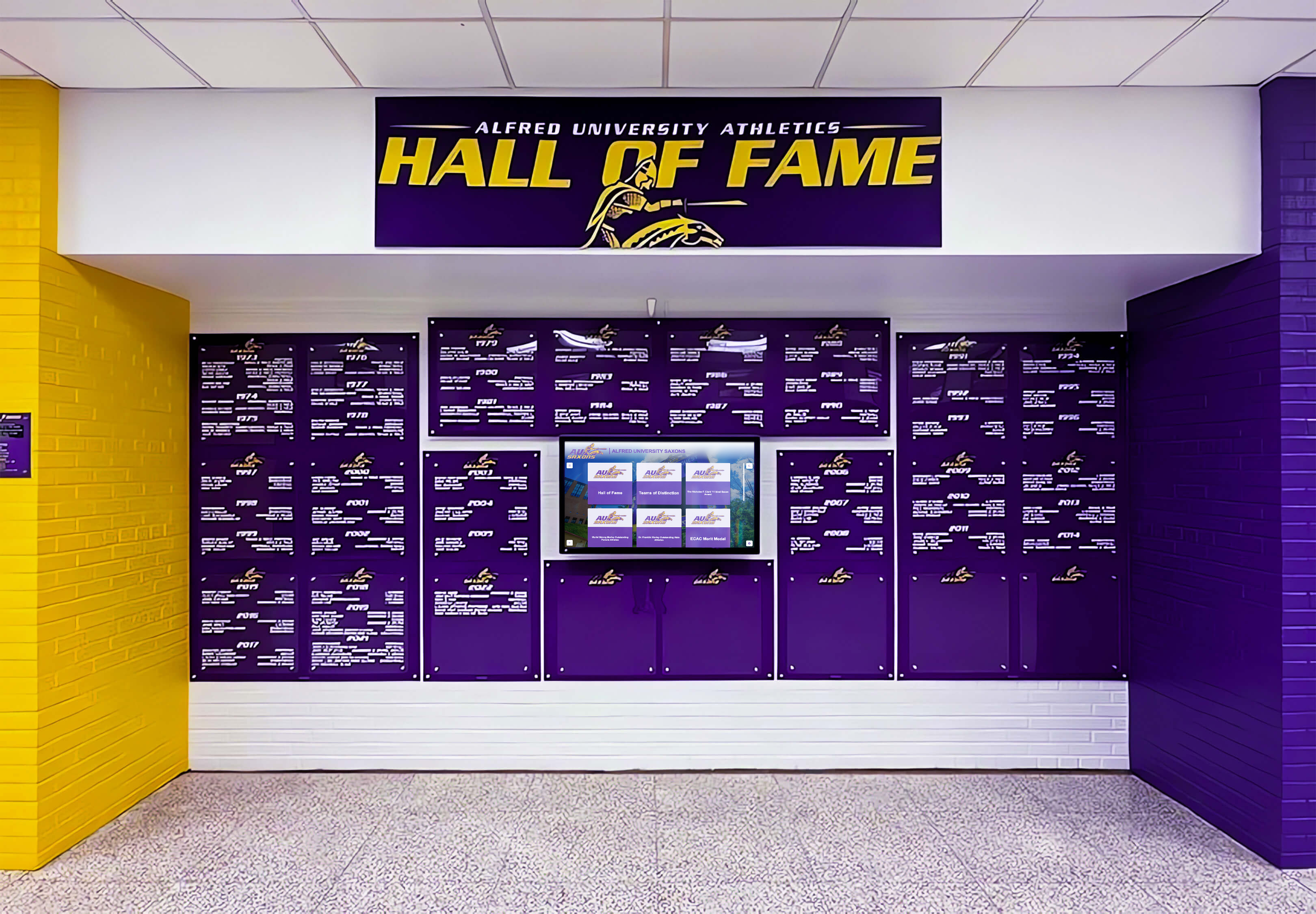
Technology Selection and Display Installation
Digital recognition requires appropriate hardware, software platforms, and professional installation ensuring reliable, long-term operation.
Display Hardware Considerations: Select commercial-grade displays rated for continuous operation (43-75 inches depending on location and viewing distance), choose between wall-mounted installations or freestanding kiosks based on space, ensure touchscreen technology provides responsive, intuitive interaction, and specify appropriate display brightness for ambient lighting conditions.
Software Platform Requirements: Implement content management systems designed specifically for recognition applications, ensure multimedia support for photos, videos, and documents, verify search and filtering capabilities for easy navigation, confirm web accessibility features for remote viewing, and evaluate analytics capabilities tracking engagement and usage.
Installation Planning: Identify high-traffic locations maximizing visibility to athletes, families, and visitors, ensure adequate space for multiple viewers to gather comfortably, verify power and network infrastructure availability, consider security and vandalism protection in accessible areas, and comply with accessibility standards for mounting height and interaction.
Professional Installation Services: Engage experienced installers familiar with commercial display mounting, ensure proper electrical connections meeting codes and safety standards, implement secure mounting preventing theft or damage, test all features and functionality thoroughly before launch, and document system specifications and operating procedures.
Resources about selecting and implementing digital coaching recognition systems provide detailed guidance for technical specifications, vendor evaluation, and installation best practices.
Recognition Ceremony and Community Engagement
Formal unveiling ceremonies create memorable experiences while generating excitement ensuring recognition displays receive appropriate attention and use.
Event Planning Elements: Schedule ceremonies during significant dates like homecoming, championship anniversaries, or end-of-season celebrations, invite retired coaches being honored along with families, include former athletes, current teams, and community members in attendance, arrange facility tours showcasing new recognition displays, and plan reception opportunities for informal interaction and reminiscing.
Program Components: Include athletic director or school leadership remarks emphasizing recognition importance, retired coach speakers sharing reflections on careers and program history, current athlete perspectives on connection to coaching legacies, formal ribbon cutting or display unveiling moments, and time for attendees to interact with displays and explore content.
Media Coverage: Issue press releases announcing recognition program launch, invite local media to cover ceremony and interview coaching legends, prepare fact sheets with coach biographical highlights and achievements, create social media content featuring coach profiles and tributes, and produce video content for institutional websites and communications.
Ongoing Promotion: Feature retired coach profiles in athletic program publications, highlight coaching legends on social media regularly throughout seasons, incorporate recognition into recruiting presentations for prospective athletes, and use coaching tributes in fundraising materials and donor communications.
Sustaining Recognition Programs Long-Term
Initial implementation represents only the beginning. Long-term success requires ongoing content maintenance, regular additions as more coaches retire, and sustained community engagement.
Annual Update Processes: Identify newly retired coaches eligible for recognition each year, gather content following established processes and templates, maintain quality standards consistent with initial profiles, and add new recognitions during annual ceremonies or events.
Content Maintenance Schedules: Review existing profiles periodically updating information or photographs, add new testimonials or achievements as they emerge, correct any errors discovered in published content, and refresh multimedia content maintaining visual interest.
Sustained Community Connection: Maintain relationships with retired coaches through regular communication, host periodic reunions or recognition events bringing coaching legends together, engage retired coaches in mentoring relationships with current staff, and involve coaching legends in special program events and milestones.
Program Assessment and Improvement: Track display usage and engagement through analytics when available, solicit feedback from coaches, athletes, and community members, identify opportunities to enhance content or functionality, and continuously improve recognition quality based on experiences.
Maximizing Impact Through Strategic Recognition Design
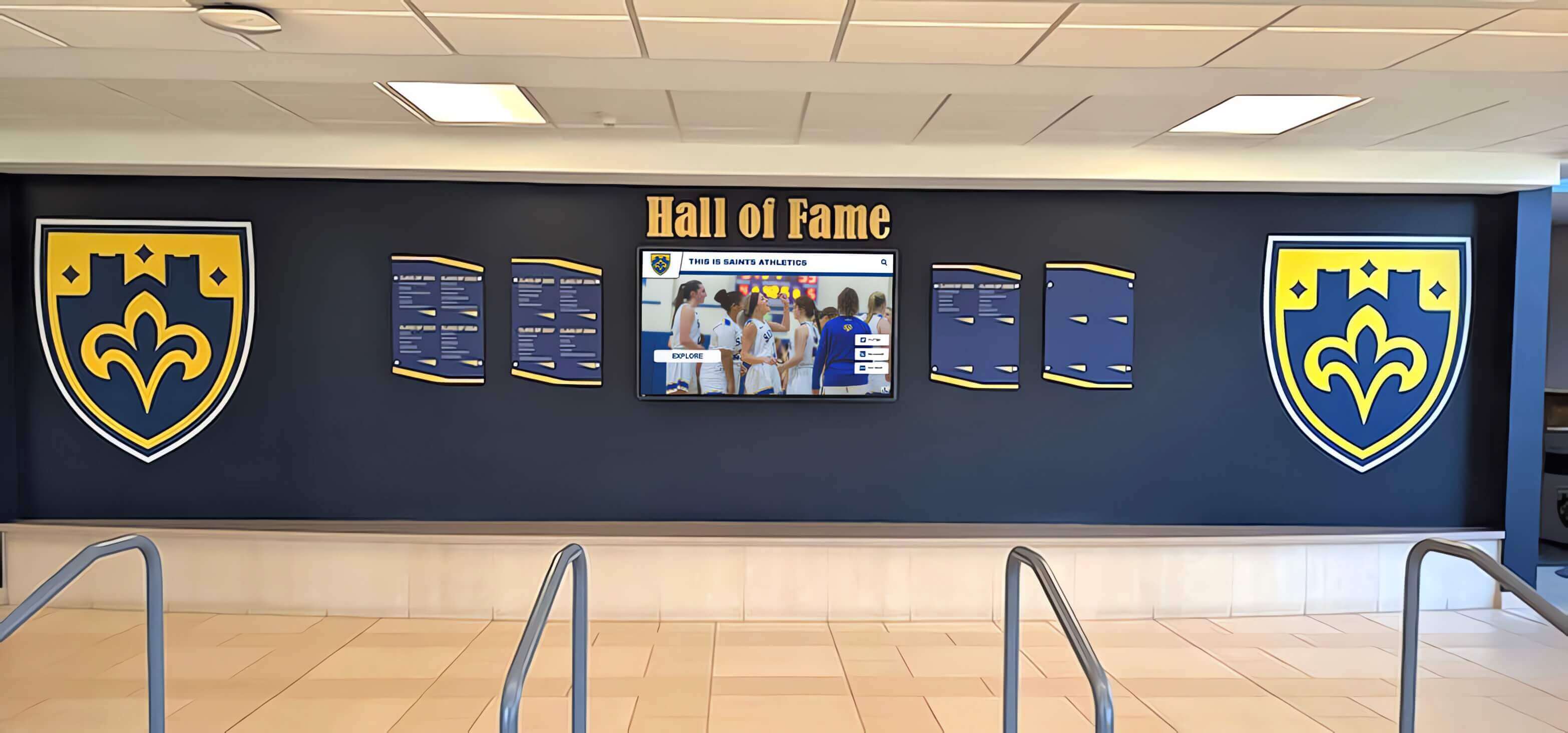
Connecting Past and Present Coaching Eras
Effective recognition creates bridges between coaching generations, showing continuity and tradition evolution across program history.
Coaching Trees and Lineages: Document relationships between coaching legends and their successors, highlight assistant coaches who later became head coaches, showcase mentor-mentee connections across generations, and trace coaching philosophies evolving through coaching transitions.
Program Evolution Timelines: Present chronological overviews showing program development across decades, illustrate competitive level changes (conferences, classifications), document facility improvements and resource evolution, and connect coaching eras to broader institutional history.
Comparative Statistics and Context: Show how coaching records compare across different competitive eras, acknowledge rule changes or season length variations affecting statistics, celebrate achievements within appropriate historical contexts, and avoid direct comparisons when competitive conditions differed significantly.
Sport-Specific Recognition Considerations
Different sports present unique coaching challenges and accomplishments deserving tailored recognition approaches.
Team Sport Coaching: Recognize strategic development and game management excellence, highlight assistant coach contributions alongside head coaches, celebrate championship team success and playoff achievements, and acknowledge player development and college placement success.
Individual Sport Coaching: Honor personalized athlete development and technical expertise, recognize management of diverse skill levels within teams, celebrate individual championship achievements and record performances, and acknowledge event management and competition coordination.
Multiple Sport Coaching: Specially recognize coaches who built success across different sports, acknowledge year-round commitment without off-season breaks, celebrate versatility and diverse athletic knowledge, and honor contributions to institutional athletic culture beyond single programs.
Inclusion of Coaching Support Staff
Comprehensive recognition extends beyond head coaches to all who contributed to program success.
Assistant Coach Recognition: Create dedicated sections honoring assistant coaches and coordinators, acknowledge specialized expertise in position coaching or strategic areas, recognize long-serving assistants who supported multiple head coaches, and celebrate assistant coaches who later achieved head coaching success elsewhere.
Support Staff Acknowledgment: Honor athletic trainers who kept athletes healthy and competitive, recognize equipment managers maintaining facilities and gear, acknowledge administrative staff supporting program operations, and celebrate volunteer coaches and community supporters contributing countless hours.
Balanced Recognition Philosophy: Maintain primary focus on head coaching legends while acknowledging broader team contributions, use proportional recognition reflecting different role significance, and create inclusive atmosphere recognizing all who built program excellence.
Resources about comprehensive athletic recognition programs demonstrate how modern systems accommodate diverse recognition categories without space constraints limiting inclusivity.
Overcoming Common Retired Coach Recognition Challenges
Athletic programs predictably encounter obstacles when implementing or enhancing coaching recognition initiatives. Understanding common challenges enables proactive solutions.
Challenge: Limited Historical Information for Early Coaching Eras
Programs often struggle documenting coaches from decades past when records were incomplete and few people remain who remember their contributions directly.
Mitigation Strategies: Conduct thorough archival research in institutional libraries and athletic department records, contact county historical societies and local newspaper archives, reach out to alumni associations requesting information and photographs from community members, post social media requests for historical information and images, accept incomplete information while acknowledging gaps honestly, and focus on documenting information that can be verified rather than speculation.
Challenge: Balancing Recognition Across Different Sports
Visibility often skews toward high-profile sports like football and basketball while coaches of less visible sports risk inadequate recognition.
Equitable Approaches: Establish recognition criteria applied consistently across all sports, ensure equal content quality and detail regardless of sport visibility, rotate featured coaches across different sports in promotional materials, highlight unique achievements specific to each sport’s competitive context, and acknowledge that coaching excellence deserves recognition regardless of community attention levels.
Challenge: Handling Controversial or Complicated Coaching Legacies
Some coaching legends achieved success while also facing controversies or exhibiting behaviors that raise recognition concerns.
Thoughtful Navigation: Consult legal counsel regarding potential risks of specific recognition, focus recognition on verifiable achievements and documented contributions, acknowledge complexity when appropriate without glossing over legitimate concerns, seek input from diverse stakeholders about recognition appropriateness, and recognize that omitting coaches entirely may provoke more controversy than thoughtful inclusion.
Challenge: Managing Expectations and Requests from Coaching Families
Family members sometimes request specific content, photographs, or prominence that exceed program standards or capabilities.
Professional Boundaries: Establish clear recognition standards applied consistently to all coaches, communicate what content formats and profile structures accommodate, accept family-provided materials subject to quality and appropriateness review, maintain editorial control ensuring institutional tone and professional standards, and explain decisions respectfully when unable to accommodate specific requests.
Challenge: Funding Recognition Program Development and Maintenance
Comprehensive recognition requires initial investment and ongoing operational costs challenging constrained athletic budgets.
Funding Approaches: Engage booster clubs or alumni associations in recognition program funding, create dedicated giving opportunities tied specifically to coaching recognition, pursue naming opportunities allowing families to sponsor coach profiles, seek corporate or community business sponsors for recognition technology, and frame recognition as investment in program culture yielding recruitment and retention benefits.
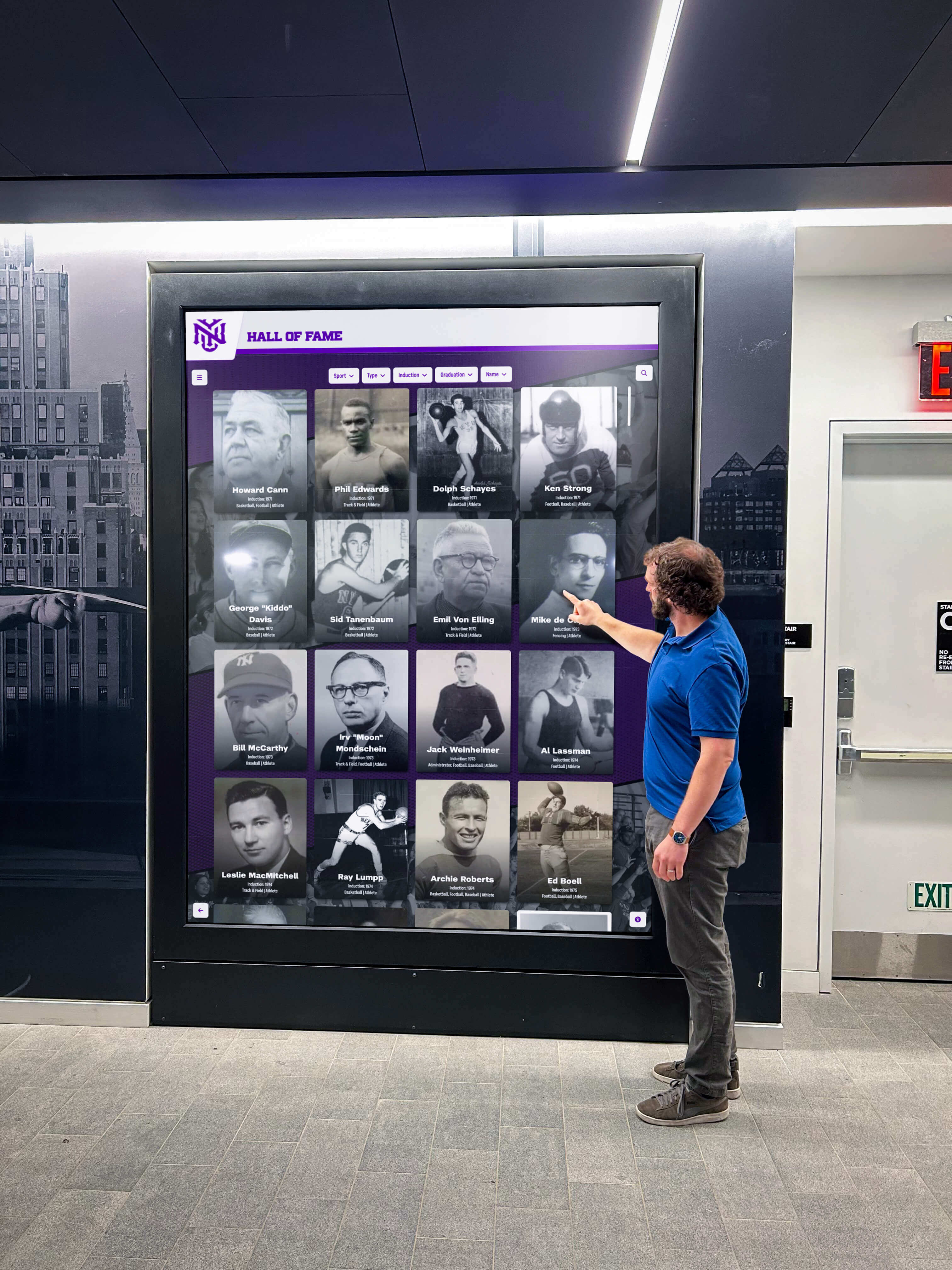
The Future of Coaching Legacy Preservation
Retired coaches represent irreplaceable links to program history—living repositories of institutional knowledge, athletic tradition, competitive wisdom, and community connection accumulated across decades of service. Their contributions shaped athletes’ lives, built program foundations, established competitive standards, and created traditions persisting long after their coaching concluded.
These extraordinary contributions deserve recognition matching their significance. Modern digital recognition technology enables athletic programs to honor coaching legends comprehensively through rich, engaging tributes preserving complete career stories, inspiring current teams, strengthening institutional traditions, and ensuring coaching legacies endure for generations.
The evolution from minimal plaque recognition to comprehensive digital tributes fundamentally transforms what’s possible in honoring retired coaches. Programs no longer must choose between acknowledging coaching legends briefly versus providing meaningful recognition—modern platforms enable efficient processes generating professional, comprehensive content automatically distributed across multiple channels reaching athletes, families, alumni, and communities wherever they gather.
Whether honoring a handful of legendary coaches or documenting complete coaching histories spanning a century, whether focusing on single sports or recognizing multi-sport excellence, whether implementing standalone coaching recognition or integrating coach tributes within broader digital athletic recognition systems—digital platforms provide capabilities and flexibility required for recognition matching coaching contributions’ true significance.
Ready to create an honor retired coaches display celebrating your program’s coaching legends? Rocket Alumni Solutions provides purpose-built platforms specifically designed for coaching recognition, combining intuitive content management with powerful presentation capabilities ensuring every coaching legend receives the comprehensive tribute their career deserves. Start building recognition that honors the past, inspires the present, and preserves coaching legacies for all future generations who will benefit from traditions these remarkable coaches established.
